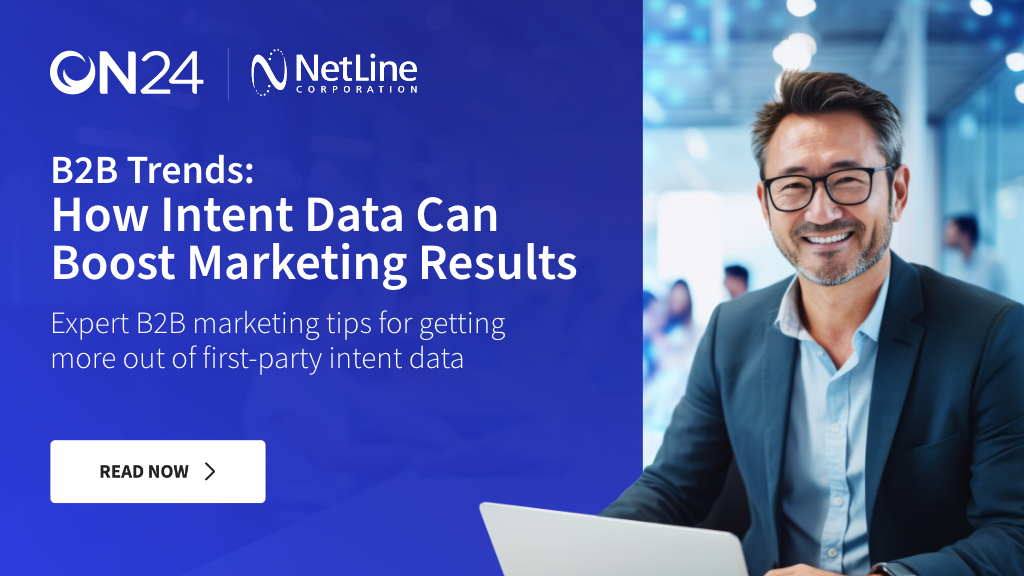What is B2B Buyer Intent Data? And How Can it Enhance Your Content Process

B2B buyer intent data can help businesses understand audiences, particularly those with the highest potential to become sales leads, in more detail. This is invaluable in modern marketing, improving the efficiency and effectiveness of strategies. For those looking for a comprehensive approach, following a content marketing guide can further enhance your understanding and use of intent data in relation to your content process.
Intent data provides critical insights that help businesses identify, prioritize and nurture potential buyers, including information about their behaviors and preferences. To use it to the best effect, though, there’s a lot to know.
That’s why we’ve put together a comprehensive guide to understanding B2B buyer intent data, covering what it is, how to collect it and what it can help you achieve.
What is B2B Buyer Intent Data?

B2B buyer intent data provides insights into web users’ behavior, helping businesses determine how best to target them. It’s often specifically concerned with identifying users actively researching solutions to a problem or close to making a purchasing decision.
Data covering search queries, content engagement, and review platform interactions are all examples of B2B buyer intent data. They reveal how potential customers behave online concerning a specific product or service need.
Types of B2B Buyer Intent Data
Like any other form of marketing or sales data, there are various types of B2B buyer intent data to consider collecting and analyzing. These types can be broadly split into two main categories:
- First-party intent data: This is collected from your digital properties, like your website. Examples of first-party buyer intent data include website visits, content downloads and page interactions.
- Third-party intent data: This is collected from external sources like ad networks or review sites, providing insights into buyer behaviors outside of your digital properties.
Both B2B buyer intent data categories provide value to businesses seeking to improve their understanding of buyer behavior online.
Combining both first-party data and third-party data sources provides a more complete picture of buyer behavior than either source can provide alone.
How B2B Buyer Intent Data is Collected
B2B buyer intent data can be collected using various methods, depending on the source from which it is being collected. A lot of the most valuable data, however, is collected using the following two methods:
- Tracking cookies: These collect data on how web users interact with a website, logging information on things like session length and pages viewed on a per-user basis as well as limited user details, like demographic data.
- Software integrations: Software platforms like CRMs and marketing tools like ON24 seamlessly collect data about users and customers, including demographics, engagement behaviors and content preferences.
Although every business has a unique way of collecting B2B buyer intent data, these two technologies provide the raw materials needed to gather useful insights.
How B2B Buyer Intent Data Fuels Your Content Strategy

B2B buyer intent data can be critical in driving better marketing outcomes, especially in your B2B content marketing strategy. It’s a great source of insights that help you understand how to tailor your content to meet the needs of your audience and achieve your specific objectives.
These are some of the best ways to use B2B buyer intent data in your content strategy:
Personalizing Content for High-Intent Prospects
Buyer intent data is perfectly suited to informing content personalization strategies. It reveals key details about your audience of potential customers, including what type of content they like to consume and how they typically engage with it. You can use these insights to create a bespoke approach to personalization.
For example, your buyer intent data might reveal that the segment of users with the highest purchasing intent is disproportionately interested in learning about a specific topic. Creating more content on that topic, targeting these high-intent users specifically in your distribution strategy, can help you convert more of them into leads and, eventually, customers.
 Optimizing Content Distribution
Optimizing Content Distribution
Content success relies on getting the right content to the right people at the right time using the right channel. Your distribution strategy is, therefore, a critical component of your overall content marketing strategy, and buyer intent data can help you refine it.
It provides insights into how and where your audience is most engaged, including information about what formats and channels they interact with the most. By applying the data’s insights to your distribution strategy, you’ll be able to ensure that every piece of content you produce benefits from better visibility and has a larger impact.
Enhancing Lead Scoring with Intent Data
Lead scoring can help improve your targeting strategy, ensuring you’re spending energy on pursuing the leads representing the greatest commercial opportunity. Integrating intent data in your lead scoring model will help boost its effectiveness, reinforcing your existing lead scoring data to help you identify and prioritize high-intent leads more accurately.
Data covering how potential buyers interact with content near the bottom of the funnel is particularly useful. This is a strong indication that those buyers are nearing the point of making a purchasing decision, which gives you the signal that they should be nurtured as a priority.
Practical Applications of B2B Buyer Intent Data

While B2B buyer intent data can provide diverse benefits when applied throughout a business, it is particularly well-suited to several practical applications.
These are two of the most important ones to know about:
Improving Account-Based Marketing (ABM)
Account-based marketing relies on a solid understanding of key ‘accounts’, which can represent narrow audience segments or specific potential leads. Intent data provides valuable insights that can help you understand individual accounts’ motivations, pain points, and behaviors in more detail, which makes it easier to target them effectively.
Data that covers accounts displaying buying signals, like engagement with specific types of content is especially useful, delivering critical insights into how best to target them with your ABM strategy.
Supporting Sales Outreach
Targeted sales outreach is crucial in nurturing and converting leads, but salespeople need good information to work with. Intent data can help them in their lead nurturing approach, offering useful insights into the best way to approach prospects.
This includes information about what channels they use most and what topics they’re interested in. Using this data helps salespeople conduct more relevant and timely outreach.
Conclusion
 Buyer intent data can prove invaluable to B2B marketing and sales teams looking for new ways to boost the effectiveness and efficiency of their content strategies. Develop ways to collect and apply it, using our tips above as a guide, and see how it enhances your marketing efforts by boosting engagement and conversion rate.
Buyer intent data can prove invaluable to B2B marketing and sales teams looking for new ways to boost the effectiveness and efficiency of their content strategies. Develop ways to collect and apply it, using our tips above as a guide, and see how it enhances your marketing efforts by boosting engagement and conversion rate.
